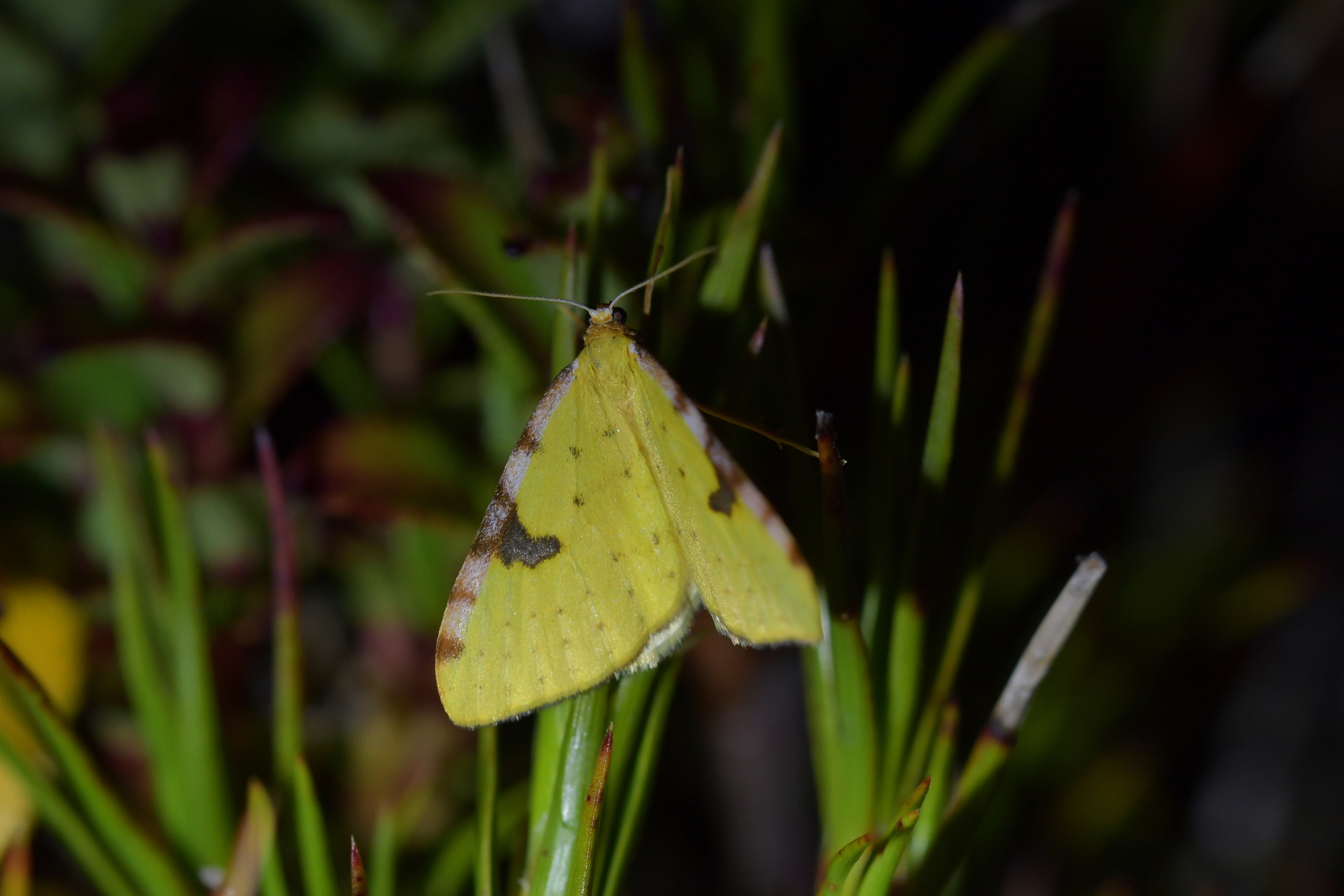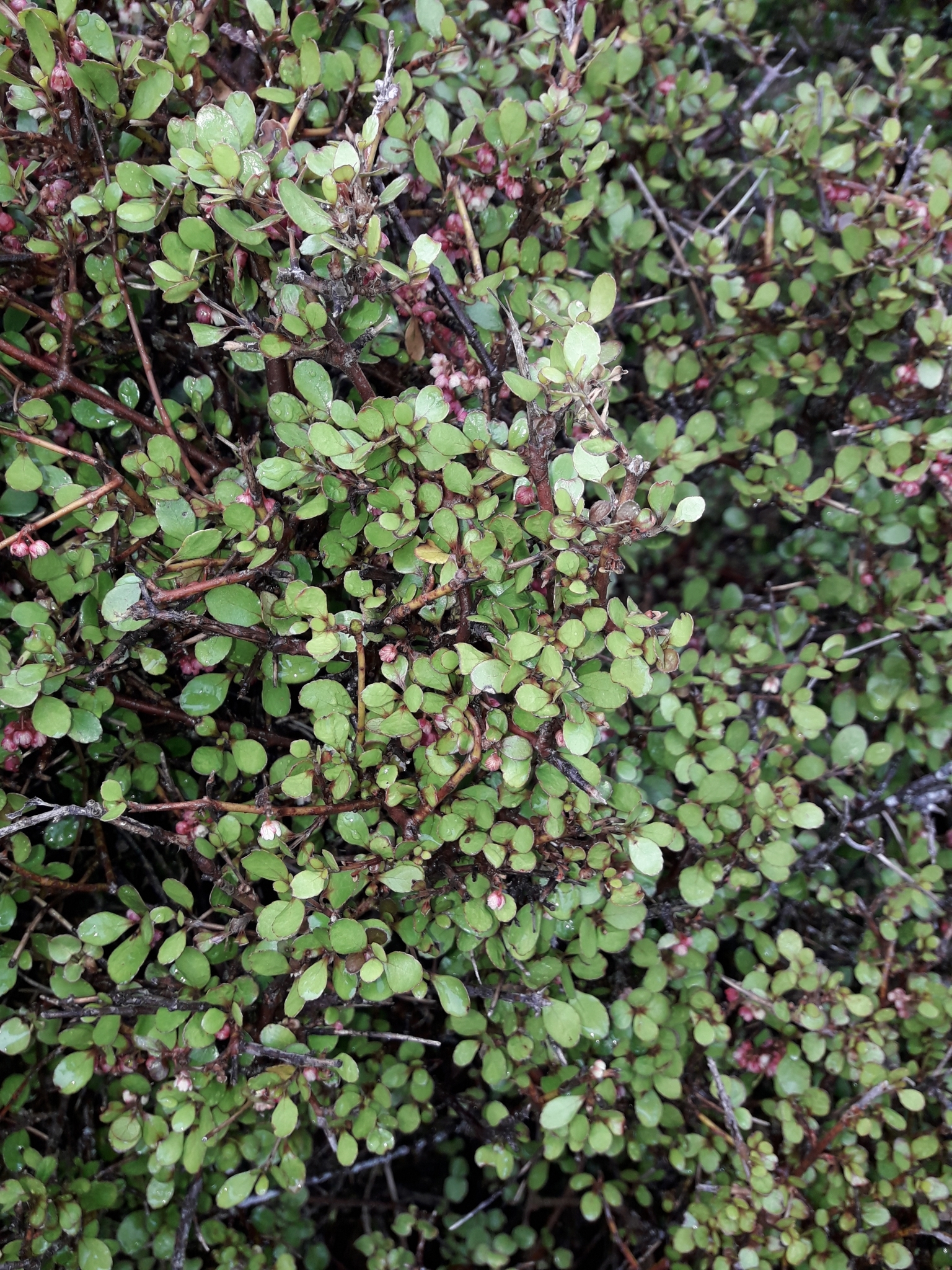Epiphryne Xanthaspis on:
[Wikipedia]
[Google]
[Amazon]
''Epiphryne xanthaspis'', also known as the Aristotelia Looper, is a
 Meyrick described this species as follows:
Meyrick described this species as follows:
 The preferred habitat of this species is sub-alpine native forest. The larval hosts of ''E. xanthaspis'' are plant species in the genus '' Aristotelia'' and include '' Aristotelia fruticosa''. Adult moths have been recorded as pollinating the flowers of ''
The preferred habitat of this species is sub-alpine native forest. The larval hosts of ''E. xanthaspis'' are plant species in the genus '' Aristotelia'' and include '' Aristotelia fruticosa''. Adult moths have been recorded as pollinating the flowers of ''
moth
Moths are a group of insects that includes all members of the order Lepidoptera that are not Butterfly, butterflies. They were previously classified as suborder Heterocera, but the group is Paraphyly, paraphyletic with respect to butterflies (s ...
in the family Geometridae
The geometer moths are moth
Moths are a group of insects that includes all members of the order Lepidoptera that are not Butterfly, butterflies. They were previously classified as suborder Heterocera, but the group is Paraphyly, paraphyleti ...
. This species was first described by Edward Meyrick
Edward Meyrick (25 November 1854 – 31 March 1938) was an English schoolmaster and amateur entomologist. He was an expert on microlepidoptera and some consider him one of the founders of modern microlepidoptera systematics.
Life and work
Ed ...
in 1883. It is endemic
Endemism is the state of a species being found only in a single defined geographic location, such as an island, state, nation, country or other defined zone; organisms that are indigenous to a place are not endemic to it if they are also foun ...
to New Zealand
New Zealand () is an island country in the southwestern Pacific Ocean. It consists of two main landmasses—the North Island () and the South Island ()—and List of islands of New Zealand, over 600 smaller islands. It is the List of isla ...
and can be found from the central North Island
The North Island ( , 'the fish of Māui', historically New Ulster) is one of the two main islands of New Zealand, islands of New Zealand, separated from the larger but less populous South Island by Cook Strait. With an area of , it is the List ...
southward to the bottom of the South Island
The South Island ( , 'the waters of Pounamu, Greenstone') is the largest of the three major islands of New Zealand by surface area, the others being the smaller but more populous North Island and Stewart Island. It is bordered to the north by ...
. The preferred habitat of this species is sub-alpine native forest. The larval hosts of ''E. xanthaspis'' are plants in the genus '' Aristotelia'' and include '' Aristotelia fruticosa.'' Adults are on the wing from December until March.
Taxonomy
This species was first described by Edward Meyrick in 1883 using specimens collected at Lake Guyon by R. W. Fereday and named ''Hermione xanthaspis''. Meyrick gave a fuller description of the species in 1884. In 1886 Meyrick renamed the genus in to which he had previously assigned this species ''Aulopola''.George Hudson
George Hudson (probably 10 March 1800 – 14 December 1871) was an English railway financier and politician who, because he controlled a significant part of the Railway Mania, railway network in the 1840s, became known as "The Railway King"—a ...
described and illustrated this species both in his 1898 book ''New Zealand moths and butterflies (Macro-lepidoptera)'' as well as in his 1928 book ''The butterflies and moths of New Zealand''. In both publications Hudson used the name ''Venusia xanthaspis'' for this species. In 1988 J. S. Dugdale discussed this species under the name ''Epiphryne xanthaspis''. The male lectotype
In biology, a type is a particular specimen (or in some cases a group of specimens) of an organism to which the scientific name of that organism is formally associated. In other words, a type is an example that serves to anchor or centralizes ...
specimen is held at the Natural History Museum, London
The Natural History Museum in London is a museum that exhibits a vast range of specimens from various segments of natural history. It is one of three major museums on Exhibition Road in South Kensington, the others being the Science Museum (Lo ...
.
Description
 Meyrick described this species as follows:
Meyrick described this species as follows:
Distribution
''Epiphryne xanthaspis'' is endemic to New Zealand and can be found from the central North Island south. As well as its type locality, this species has been observed at Mount Ruapehu and in the Tararua Ranges in the North Island as well as at Mount Arthur, Otira, and the Routeburn Valley.Habitat and hosts
 The preferred habitat of this species is sub-alpine native forest. The larval hosts of ''E. xanthaspis'' are plant species in the genus '' Aristotelia'' and include '' Aristotelia fruticosa''. Adult moths have been recorded as pollinating the flowers of ''
The preferred habitat of this species is sub-alpine native forest. The larval hosts of ''E. xanthaspis'' are plant species in the genus '' Aristotelia'' and include '' Aristotelia fruticosa''. Adult moths have been recorded as pollinating the flowers of ''Olearia virgata
''Olearia'', most commonly known as daisy-bush, is a genus of flowering plants belonging to the family Asteraceae, the largest of the flowering plant families in the world. Olearia are found in Australia, New Guinea and New Zealand. The genus i ...
''.
Behaviour
The adults of this species are on the wing from December to March. Adults are regarded as being 'medium fliers' with intermedia flight powers and remain active in light breezes. Adults are attracted to light.References
{{Taxonbar, from=Q13546762 Geometridae Moths of New Zealand Endemic fauna of New Zealand Moths described in 1883 Taxa named by Edward Meyrick Endemic moths of New Zealand